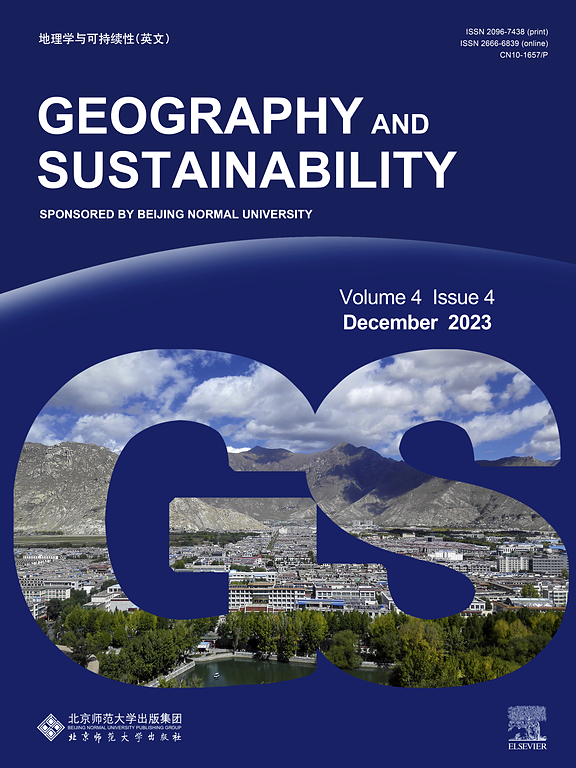How does urbanization evolve heterogeneously in urbanized, urbanizing, and rural areas of China? Insights from ecosystem service value
IF 8
1区 环境科学与生态学
Q1 GEOGRAPHY, PHYSICAL
引用次数: 0
Abstract
The rapid population and land urbanization not only promoted economic development but also affected the ecosystem service value (ESV). In the context of new-type urbanization and green development, it’s essential to investigate the impacts of urbanization on ESV in China. However, a comprehensive and dynamic framework to reveal the relationship between ESV and urbanization processes is lacking. This study adopted multi-source datasets to portray China’s urbanization process by integrating population, land, and economic urbanization, evaluated the ESV changes of 10 categories by gross ecosystem product (GEP) methods, and explored ESV changes within different urbanization scales and speeds. The results showed rapid urbanization in the population, land, and economic dimensions in China, with a faster process of economic urbanization. The ESV also exhibited an increasing trend, with higher levels in the southeastern coastal regions and lower levels in the northwestern regions. Urbanization had positive impacts on ESV across various research units, but the ESV exhibited heterogeneous changes across different urbanization scales, speeds, and their interactive effects. The response of ESV to dynamic urbanization processes was influenced by socio-economic, ecological, and policy factors; it is essential to combine targeted measures with general ecological product value realization methods in each unit to maximize social-economic-ecological benefits.

求助全文
约1分钟内获得全文
求助全文
来源期刊

Geography and Sustainability
Social Sciences-Geography, Planning and Development
CiteScore
16.70
自引率
3.10%
发文量
32
审稿时长
41 days
期刊介绍:
Geography and Sustainability serves as a central hub for interdisciplinary research and education aimed at promoting sustainable development from an integrated geography perspective. By bridging natural and human sciences, the journal fosters broader analysis and innovative thinking on global and regional sustainability issues.
Geography and Sustainability welcomes original, high-quality research articles, review articles, short communications, technical comments, perspective articles and editorials on the following themes:
Geographical Processes: Interactions with and between water, soil, atmosphere and the biosphere and their spatio-temporal variations;
Human-Environmental Systems: Interactions between humans and the environment, resilience of socio-ecological systems and vulnerability;
Ecosystem Services and Human Wellbeing: Ecosystem structure, processes, services and their linkages with human wellbeing;
Sustainable Development: Theory, practice and critical challenges in sustainable development.
 求助内容:
求助内容: 应助结果提醒方式:
应助结果提醒方式:


